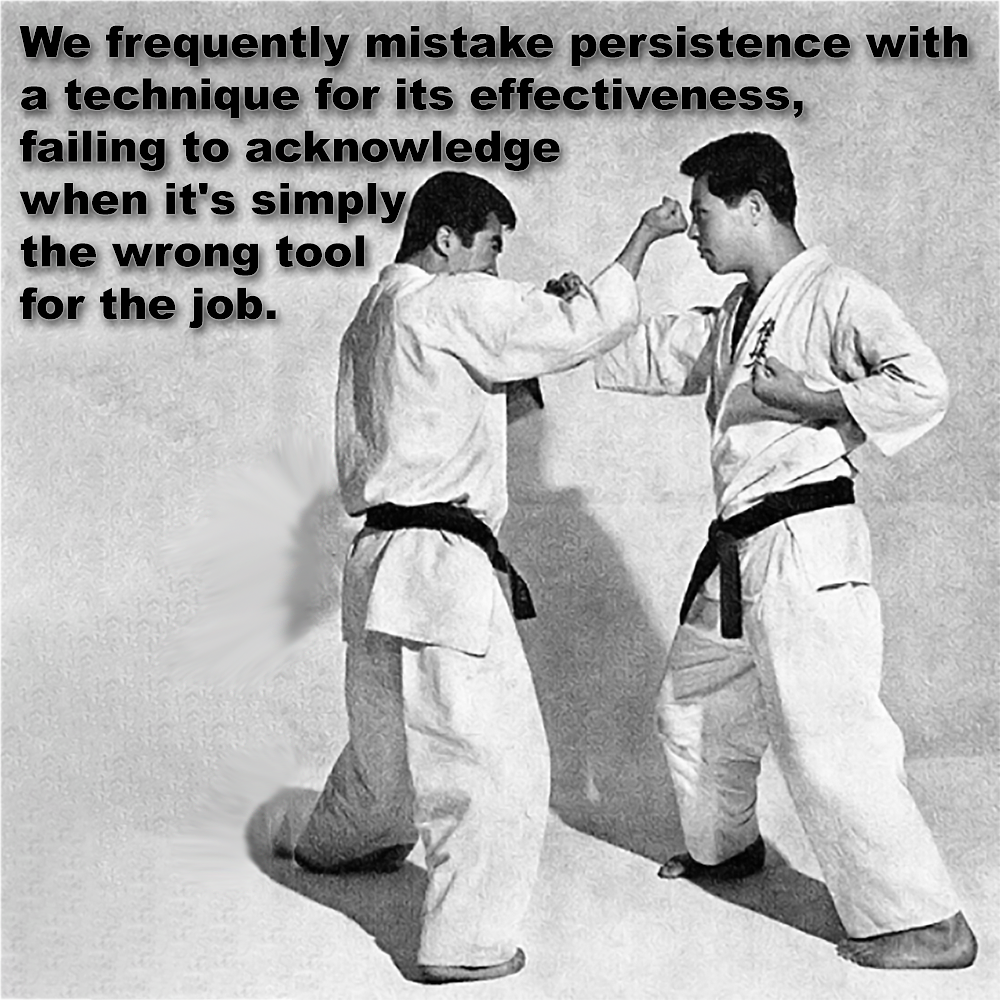
"We frequently mistake persistence with a technique for its effectiveness, failing to acknowledge when it’s simply the wrong tool for the job."
Posted by ADAM CARTER on FEB 21, 2024

"We frequently mistake persistence with a technique for its effectiveness, failing to acknowledge when it’s simply the wrong tool for the job."
(1 minute 55 second read)
Much of today’s martial arts training, often presents a romanticized image of combat.
You bow, assume stances, exchange strikes within a controlled environment, with padded hands and feet, possibly even head guards too. This structured approach fosters discipline, technique, protection, and respect – but does it truly prepare you for the chaotic reality of self-defense?
An attacker at close-quarters, fueled by aggression and unpredictable tactics, highlights the disconnect between some traditional training and real-world threats.
Bows and stances become irrelevant when faced with the immediacy of someone spitting in your face, grabbing your clothing or your hair, trying to bite or head-butt you. The controlled environment of the dojo struggles to simulate the adrenaline, fear, and chaos that accompany a real-life assault.
While traditional training methods instill valuable skills, their focus might not translate well to the unpredictable nature of real-world encounters.
Don’t get me wrong. If you want to train for consensual fighting, dojo sparring, for sporting competition, then that’s great. It can be amazing fun. Just realize and truly understand the difference and train accordingly.
For those that want a little more realism, something closer to a real-world encounter, consider incorporating elements of surprise, close-quarter grappling, psychological pressure, swearing, name-calling, add a few head-butts, a few bites, this could bridge the gap between controlled practice and real-world application.
This delicate balance requires an open-minded approach, exploring alternative training methods while respecting the core principles of the martial art you practice.
Addressing this disconnect requires a nuanced approach, because blindly abandoning tradition would be detrimental – but clinging to outdated methods could leave practitioners vulnerable, if things take a turn for the worst at 2am, when all you want is a pizza.
Just have a common sense approach, stop believing your way is the best and only way, acknowledge the limitations of traditional karate-ka on karate-ka training.
Because recognizing its strengths while acknowledging its limitations, is the first step towards bridging the gap.
Remember, self-defense is not just about physical techniques; it demands adaptability, situational awareness, de-escalation, and the ability to respond to the unexpected, while having the right tools to navigate potentially dangerous situations.
Ultimately, the approach that works best for you is up to you. If you’re learning the way you want to, on your personal journey, then by all means, continue doing it! However, it’s valuable to be aware of each methods limitations and prioritize the deeper understanding of what applies where.
Let’s continue this important work towards a future where your training truly prepares you for the realities of self-defense, or the pursuit of sporting prowess, or becoming a capable martial artist. Whichever your preference, remember that context is everything, so train accordingly.
“We frequently mistake persistence with a technique for its effectiveness, failing to acknowledge when it’s simply the wrong tool for the job.”
